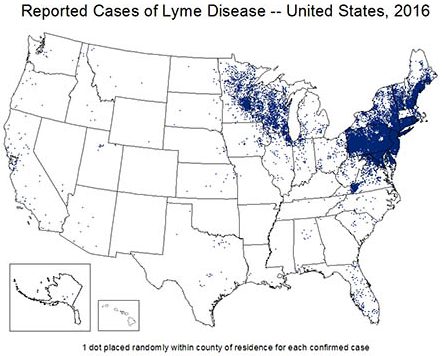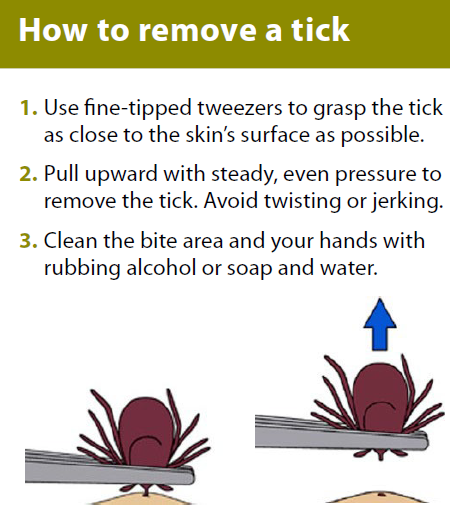This creepy crawler is spreading more disease than ever

Blood-sucking ticks on pets and people are increasingly spreading more than heebie-jeebies. They now account for three out of five of all reported disease cases from mosquitos, ticks and fleas combined.
The number of reported diseases from tick bites more than doubled in 13 years, according the Centers for Disease Control and Prevention. Lyme disease, the most common illness, has increased steadily over the past 25 years and spread in areas such as Chicagoland and Wisconsin, federal data shows.

Source: The Centers for Disease Control and Prevention (CDC)
Dr. Catherine Creticos, an infectious disease specialist with Advocate Illinois Masonic Medical Center in Chicago, Ill. says it is important to take preventive measures when outdoors during the spring and summer months. That’s when hard-to-spot baby ticks are most active, searching for hosts from leaf litter on the forest floor or from the tips of grasses and shrubs.
Effective counter measures include long-sleeved shirts and long pants, bathing after outdoor activities where ticks are abundant, and using tick repellent on skin and clothing. Additional measures include tumbling clothes in a dryer on high heat for 10 minutes to kill ticks on dry clothing after you come indoors, according to the CDC, which publishes additional prevention information online.

Source: The Centers for Disease Control and Prevention (CDC)
Ticks can be transmitted by pets into your home, or on clothing or shoes. An immediate small bump or redness at the site of a tick bite, which resembles a mosquito bite, is common and not a sign of infection. Removing a tick that has bitten someone within 24 hours greatly reduces the risk of Lyme disease, health authorities say.

Source: The Centers for Disease Control and Prevention (CDC)
However, if you develop illness within a few weeks of a tick bite, see your health care provider right away. Common symptoms of Lyme disease include a rash, fever, body aches, facial paralysis and joint pain.
Ticks can also transmit other diseases, so it’s important to be alert for any illness that follows a tick bite.
“Because tick-borne diseases can present mild symptoms to severe infections, it can be difficult for physicians to diagnose,” Creticos says. “If someone has been bitten by a tick and develops symptoms, they should see their physician.”
In the majority of cases, Lyme disease is successfully treated with prescription antibiotics and patients recover fully.
For comprehensive information about Lyme disease and tick bites, visit the CDC online.
Related Posts
Comments
About the Author
health enews staff is a group of experienced writers from our Advocate Health Care and Aurora Health Care sites, which also includes freelance or intern writers.

















